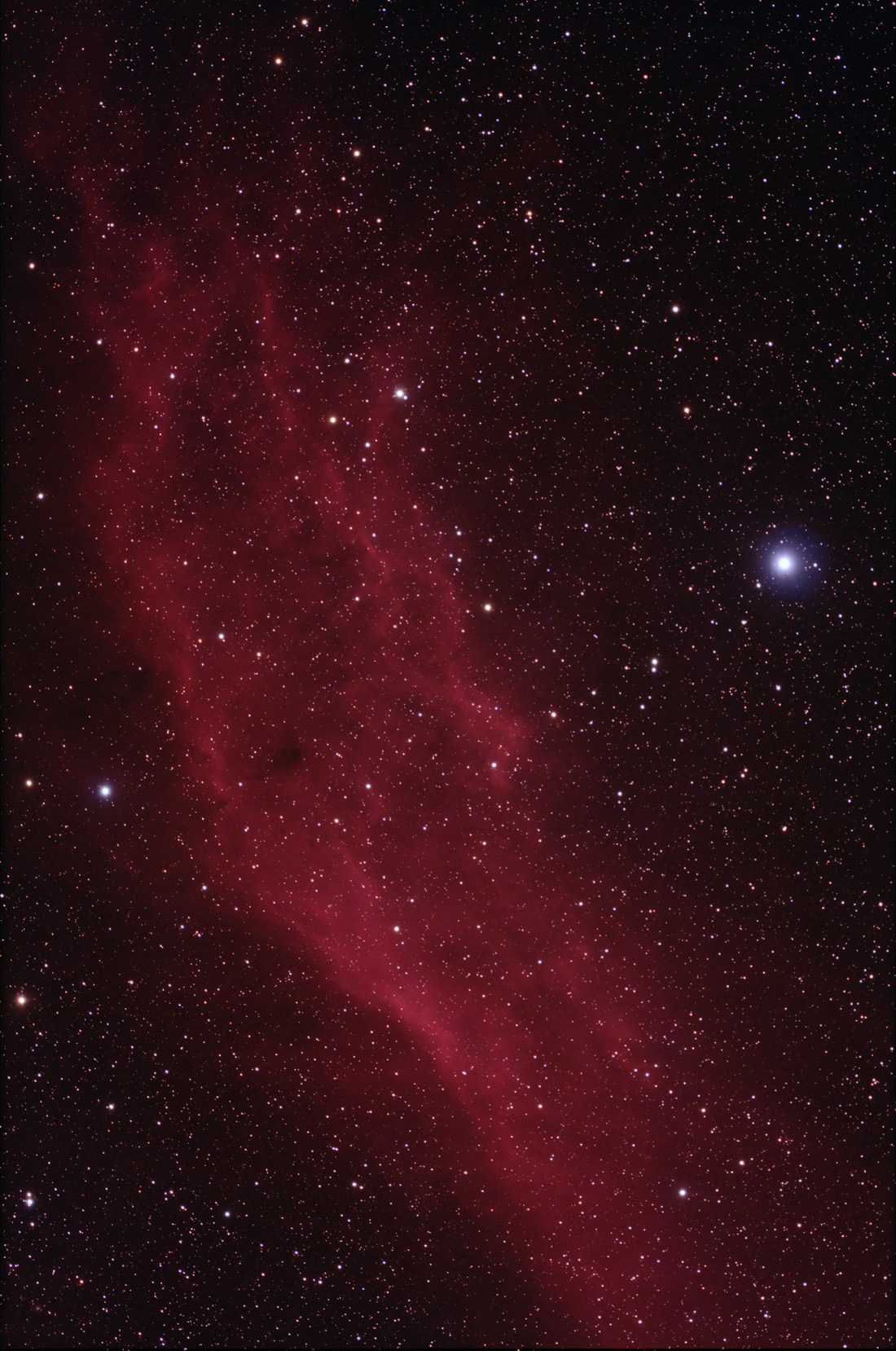 |
NGC 1499 - The California Nebula in Perseus
 |
Copyright 2008 Hap Griffin
Known as NGC 1499,
the California Nebula is so named because of its loose resemblance to the shape
of the state. Radiation from the hot blue-white main sequence star Xi
Persei, shown at the right, causes this huge cloud of hydrogen to fluoresce.
This emission nebula covers a large patch of sky over two degrees long and is
sometimes faintly visible to the naked eye from very dark locations. It
lies at a distance of 1000 light years.
Date/Location:
December 22, 2008 Griffin/Hunter
Observatory Bethune, SC
Instrument: Canon 40D Digital SLR (modified) through Takahashi
FSQ-106N on AP-1200 mount
Focal Ratio: F/5
Guiding: Auto via SBIG ST-402 through Orion 10" Newtonian
Conditions: Visually clear and cold - sky glow from moisture
visible
Weather: 20 F
Exposure: 165 minutes @ ISO 800 (53 x 3 min exposures)
Filters: Baader UV/IR Block internal to camera
Processing: Focused and captured with ImagesPlus v3.50a Camera
Control. RAW to TIFF conversion, frame calibrations, alignment, Digital
Development with ImagesPlus v3.50a.
Final tweaking in Photoshop CS3.